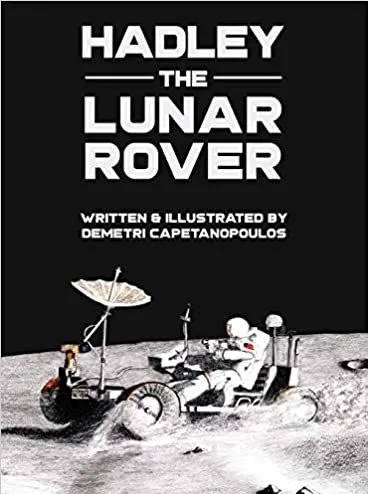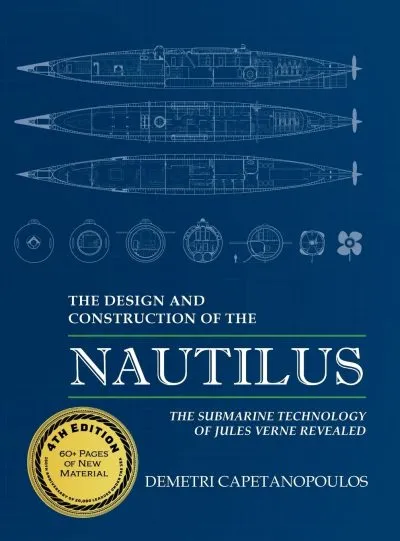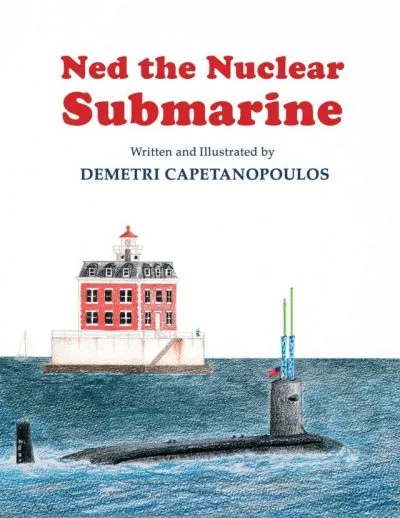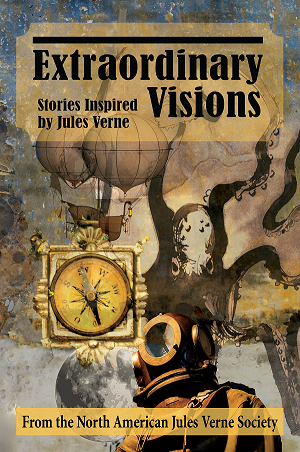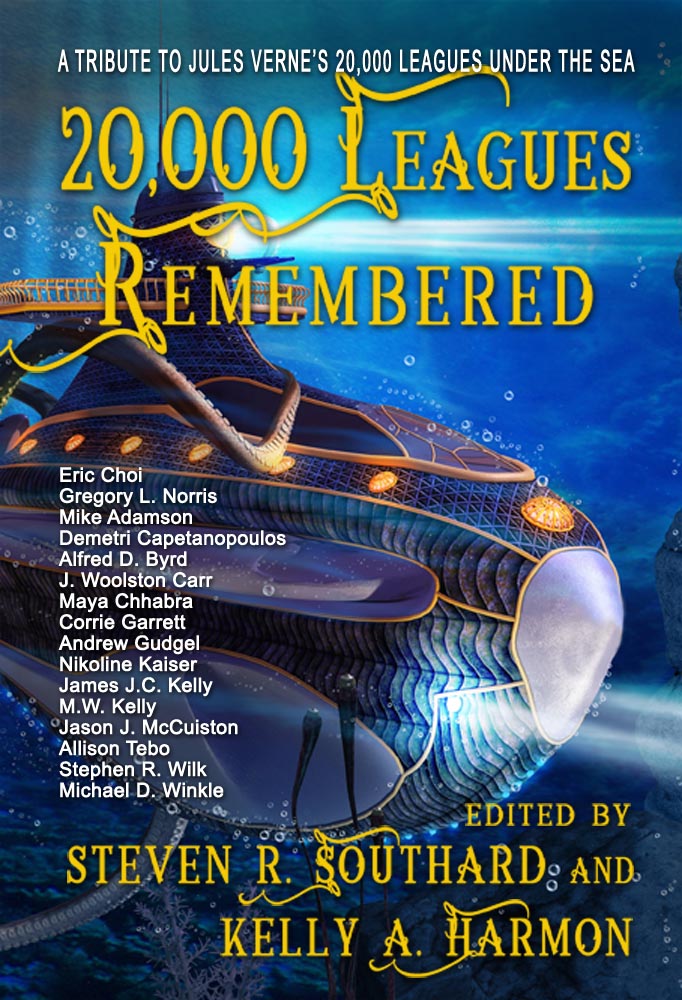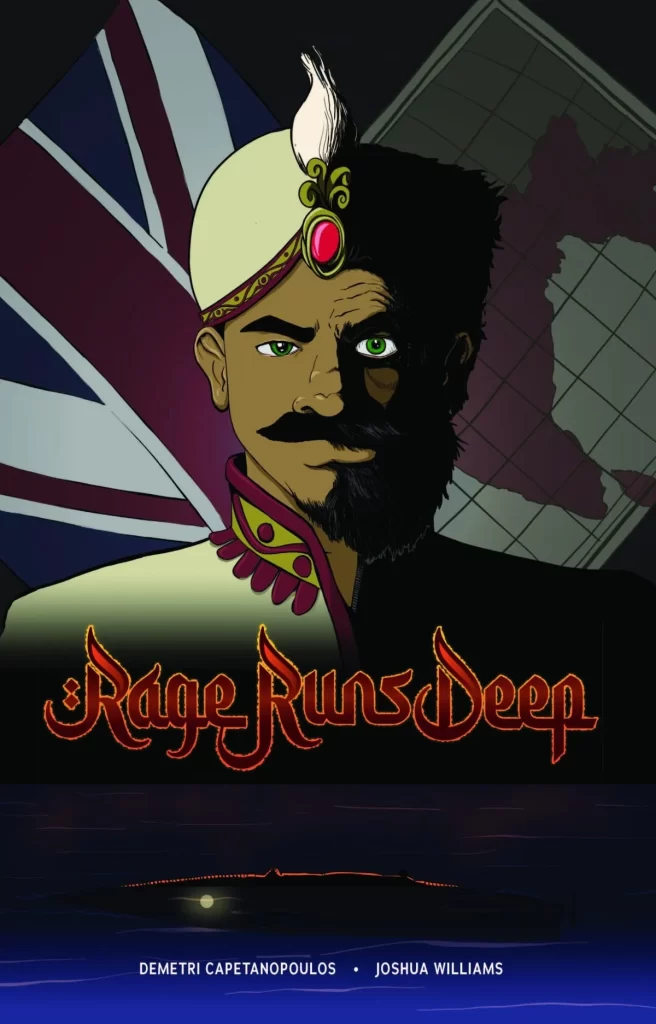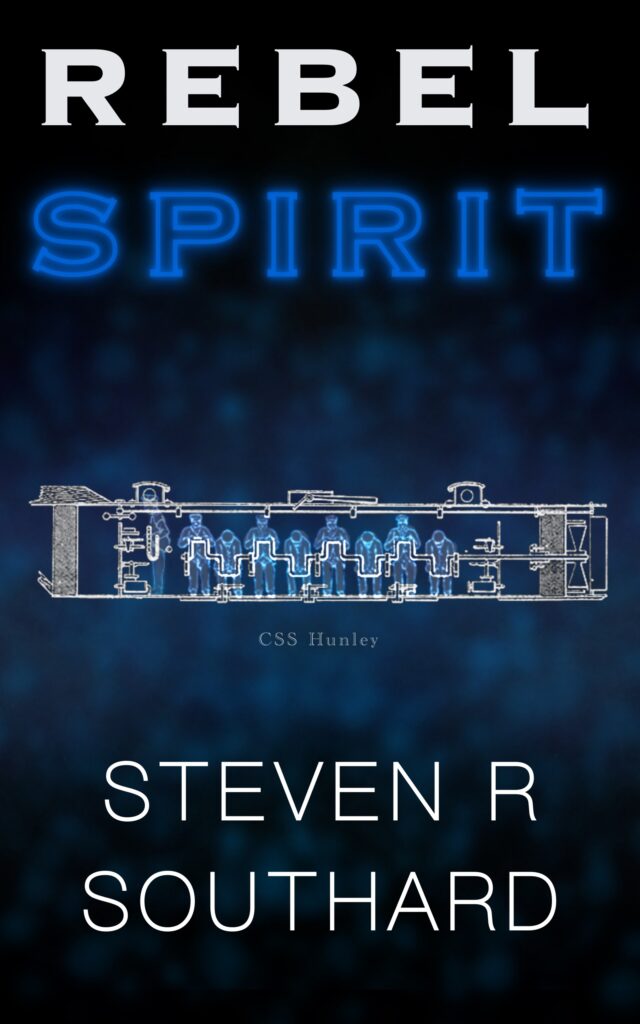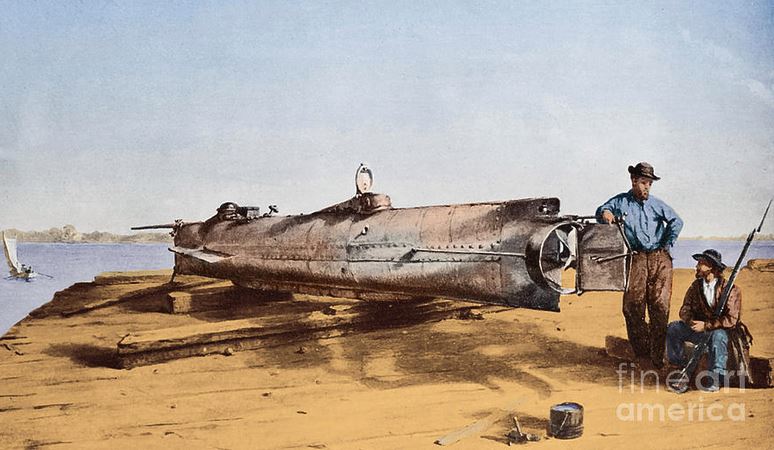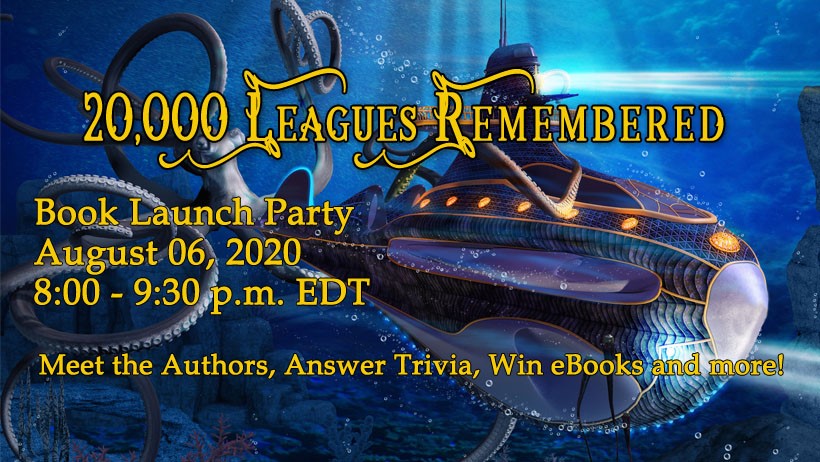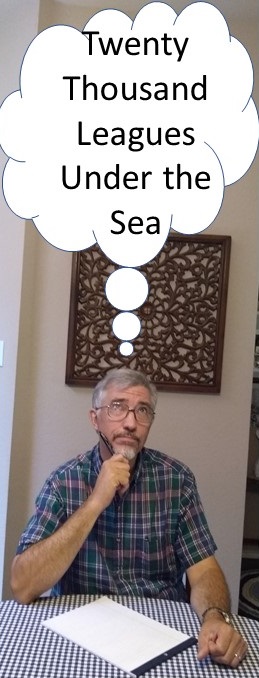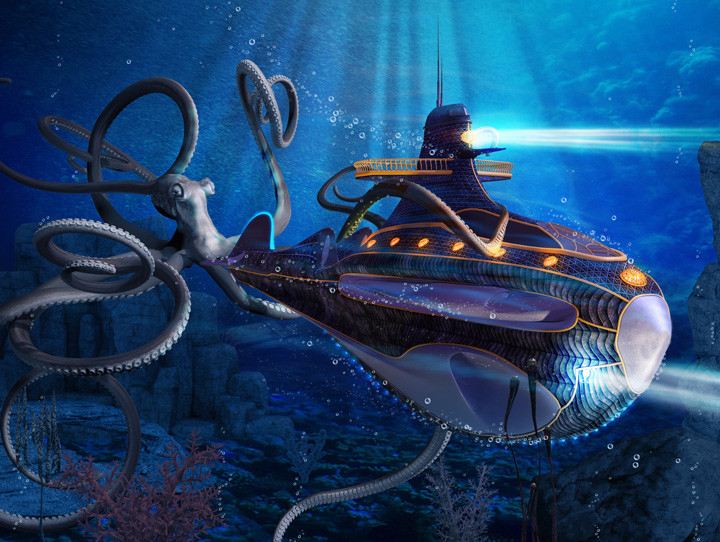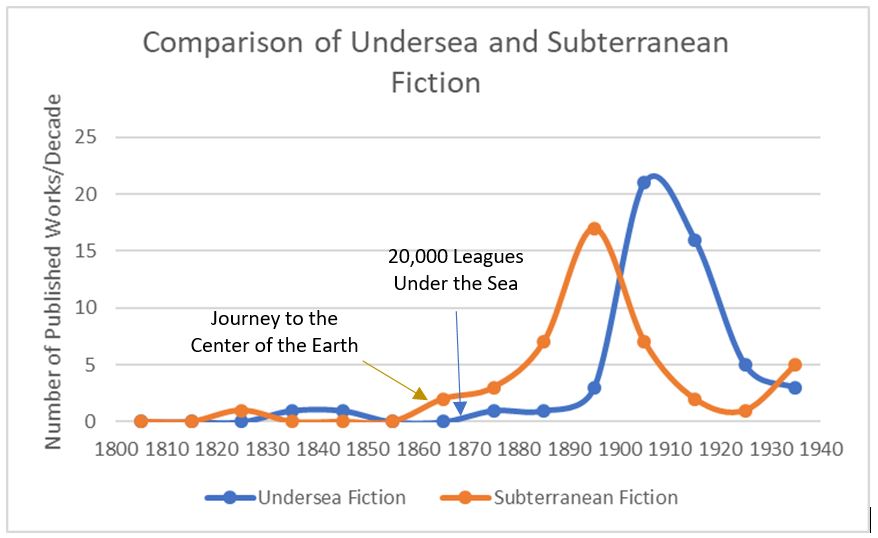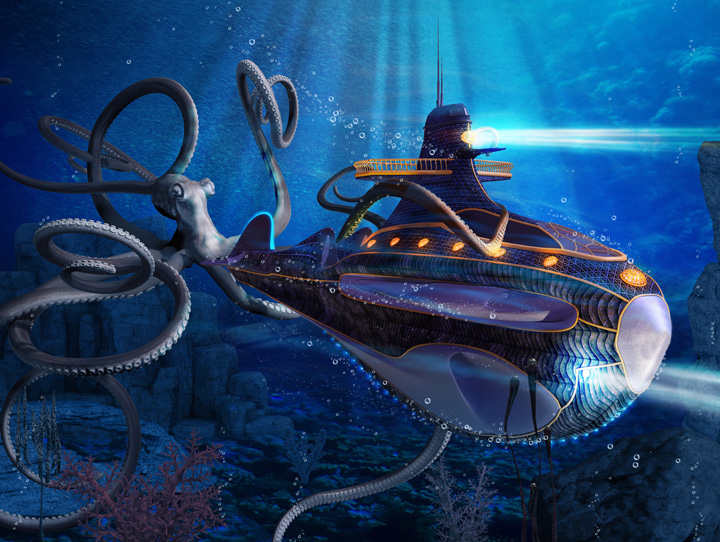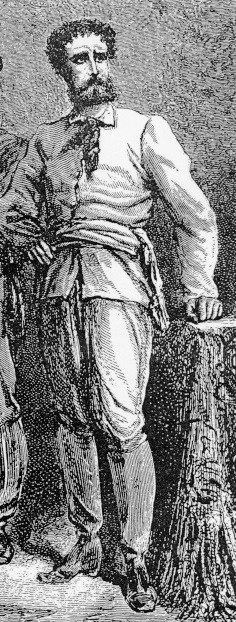Most authors I interview lead lives far different from mine. In today’s interview, it’s almost like I’m interviewing myself. Like me, Demetri Capetanopoulos received technical training and served as an officer aboard submarines before turning to writing. One of his stories appears in 20,000 Leagues Remembered and another is in Extraordinary Visions: Stories Inspired by Jules Verne.
Like many boys of a certain age, Demetri Capetanopoulos discovered Jules Verne and was captivated—not just by the tales of scientific adventure—but by the example of the power of imagination to shape what might be possible with the creative application of technology. Who can say with surety what influence it had, but he became qualified as a nuclear submarine engineer and deep submersible pilot.
With a career spent in technical realms, Demetri has found in his writing a delightful synthesis of his passion for science, history, and the creative arts, all while rediscovering a boyhood inspiration. Surely Verne would approve. He dedicates his literary labors of love to his son, Leo, and to all those for whom submarine dreams stir the child within.
Let’s dive into the interview:
Poseidon’s Scribe: How did you get started writing? What prompted you?
Demetri Capetanopoulos: I don’t recall a ‘start’ to my writing, it emerged from me at the earliest age. In elementary school it may have been an essay or report for extra credit. In middle school I sought to emulate the short stories that I was consuming—those by Arthur C. Clarke were favorites. By high school I wrote my chapter book—a WWII submarine story—inspired by the type of storytelling I found in Alistair Maclean’s novels, which I was passionate about at the time. As I became busy with a career that produced its own adventures, writing was a way to capture moments and preserve emotions for some later “great American novel.” I also discovered that the ability to write and speak in a way that could move people was intoxicating and the military offered many opportunities to speak in front of an audience. I’ve come to realize that one of the things I enjoy most in writing is tackling challenges—whether it’s the strict format of a screenplay, trying to emulate the style of a particular author, stirring an audience to emotion, or bringing a past reality authentically to life. It’s still the challenge that thrills today which is probably why I seldom write the same type of story or style twice and why constraints inspire me.
P.S.: You just met an interested reader in an elevator who asks, “What sort of stories do you write?” The doors will open soon, so what short answer do you give this reader?
D.C.: Hopefully sticky stories—meaning those that feature some element that sticks in your subconscious and influences your creative engine even when all other details about the story have slipped from memory.
P.S.: Your website, “Precise Imagination,” looks far different from most author’s sites. It seems intended to inspire people to design and build things. Tell us about the purpose and philosophy of the site.
D.C.: It’s not a site intended to explicitly promote my writing, rather it describes my philosophy that I try and bring to all my creative endeavors. I can’t claim to originate it, but it is my synthesis of the ancient Greek musings on excellence and achieving that elusive optimization of both beauty and function. Those elements are as relevant to writing as they are to any creative activity including the building of things.
P.S.: Who are some of your influences? What are a few of your favorite books?
D.C.: I was fortunate to have a solid grounding in the classics—Stevenson, Kipling, Poe, Wells, Twain, Verne, Bradbury and the like. But there came a fateful day when I read Endurance by Alfred Lansing which recounted the true, yet scarcely believable tale of Shackleton’s Antarctic expedition, when I realized within the nooks and crannies of history, non-fiction tales could satisfy every thrill, wonder, and amusement provided by fiction. I have seldom picked up a work of fiction since and so, have come to appreciate the nuanced difference between authors who can competently relate a compelling history and those gifted few who possess “a way with words” that elevates the narrative to something poetic. Fate is the Hunter by Ernest K. Gann is a top-notch example of this non-fiction art in my mind.
P.S.: Your background as a submariner explains much of your fiction. But what led to the non-submarine works Hadley the Lunar Rover, and On Ice?
D.C.: A lifelong passion for space exploration motivated the story about a plucky lunar rover waiting for humans to return to the moon. The sentiment seemed timely and I wanted to challenge my limited drawing skills with a very different artistic style than I used in Ned the Nuclear Submarine (which was deliberately simplistic to make what could be an intimidating subject, more accessible to kids). After my experience living and working at McMurdo Station in Antarctica it seemed obvious to me that fascinating, yet wacky, place was perfect for a screenplay, which I called “On Ice.” Having never written one before, I was drawn to the challenging constraints imposed by both the screenplay format and my own desire for compelling plot drivers grounded in realism (i.e., no aliens/UFO’s, Atlantis under the ice, sea monsters, etc.). I can attest that screenwriting will teach a writer discipline, but for me, when I write any story it is always running in my head as a movie, and I just write down what I am seeing in my mind.
P.S.: The world of submarines and engineering (your background) seems one of logical equations, arcane technical details, and high-tech machinery, while the world of a fiction writer involves deep emotions, the infinite complexities of the human heart, and the often-irrational behavior of flawed characters. How did you manage the transition from one world to another?
D.C.: A truly insightful question. The truth is I have never made a transition—I have lived a life and made a career in highly disciplined, technical realms but always stood somewhat apart from my colleagues as person who saw things slightly differently, processed experiences with perhaps deeper personal reflection, and always injected a bit of dramatic flair and staging to the way I went about my duties. The emotional intelligence, communication skills, and empathy that often exemplify writers turn out to be pretty good leadership traits that can garner success even in a highly technical and structured organization. I suppose in my case it made up for whatever deficiencies I had academically compared to my rather brilliant colleagues.
P.S.: When most people read Jules Verne’s Twenty Thousand Leagues Under the Seas, they skip over the chapters devoted to the design of the Nautilus. Not you. You wrote a detailed, technical manual about how Captain Nemo built it. Tell us about The Design and Construction of the Nautilus and why you wrote it.
D.C.: It was only after I became a nuclear submarine engineer and had occasion to read a modern translation (Naval Institute Press) of the novel that restored much of the previously edited technical discussions did I appreciate that Verne’s conception of the Nautilus was much more specific and realistic than the innumerable later incarnations have suggested. I had gotten professionally interested in early submarine development and wanted to write a book discussing the evolution of the relevant technology and design principles without running afoul of concerns about classified information that my background might prompt. The answer was to use a fictional submarine—Captain Nemo’s Nautilus—to explore the technology of the period that inspired Verne and see how close reasonable extrapolations could have gotten to a workable design. No one with a similar technical background had attempted this before. The closest effort was a piece written by a French nuclear submarine engineer, Jean Gagneux, but he focused on a technical critique of where Verne’s design would fall short. Though the analysis was interesting and completely legitimate, I wanted to take the opposite approach. If at times the book seems overly technical or saturated with detail, my only defense is that nuclear submariners are every bit as critically minded an audience as Verne aficionados and I was keen to avoid being dismissed or laughed at by either.
P.S.: Ned the Nuclear Submarine appears to be unlike any other book on the market—a children’s book, told in rhyme, about a submarine. What inspired it?
D.C.: I think every new parent imagines they will write a children’s book, but it took me until my son was nearly eight years old to complete it! I was determined to do my own illustrations and (against all publishing advice) to do the story in rhyme—because kids like rhyme. They also like to learn how things work and don’t mind when some words or ideas that are over their heads now can be appreciated later, which is why the text is designed to stretch their literacy and the illustrations to expand their minds. But most of all, kids like a good story with compelling characters. In my observation, there are a great many exquisitely crafted children’s books today whose focus is about delivering moral messages that resonate with adults and are pretty thin on character and story. In this case I knew exactly what my target to emulate was: Mike Mulligan and His Steam Shovel—a classic from 1939 that is still in print today. It offers a very realistic mechanical character that evokes real emotion while facing and ultimately surmounting authentic problems and fears. Just like Ned. I made Ned a submarine because the first rule of writing (and drawing for that matter) is do what you know.
P.S.: For the anthology Extraordinary Visions: Stories Inspired by Jules Verne, you wrote “Rust and Smoke.” In it, you take readers to a setting of stark beauty in two different time periods. Tell us where the story takes place and why you chose that region.
D.C.: In Twenty Thousand Leagues Under the Sea, the fate of the Nautilus is left unknown, but Jules Verne offers three possible things that could have survived the story and persist in our world today: Captain Nemo’s coral cemetery in the eastern Indian Ocean, the subterranean refueling depot inside one of the Canary Islands, and the unusual iron dinghy that Professor Aronnax, Conceil, and Ned Land use to escape the Nautilus. So, I wrote a very different style of story for each of those loose ends. “Rust and Smoke” takes place in the Lofoten Islands that comprise the northwestern coast of Norway, but the reader is only gradually given the clues to figure this out, in part, to draw out the connection to the famous Maelstrom, which is located in these waters and the serves as the climax for Verne’s novel. I wanted to write a story in modern times that could provide a realistic connection to the events of Verne’s novel, hence the two story lines, set in differing time periods, that work their way toward their mutual resolution of one of the novel’s loose ends (while introducing a beguiling fourth loose end).
P.S.: Your story “Homework Help from No One” appears in 20,000 Leagues Remembered. Tell us about the protagonist, his problem, and the setting.
D.C.: This was the second of my three “loose end” stories (yes, there is an as-yet unpublished third) and the style and tone is intentionally quite different. For this piece, I wanted to write a story of the sort that might once have appeared in Boy’s Life magazine—specifically something in the same vein as the Mad Scientists’ Club stories, which were a favorite of mine growing up. So naturally the protagonist is boy of about the same age, and with the same sort of concerns and impulsiveness that I imaged the target reader might be. Innocently enough, he gets himself in real trouble while simultaneously making an amazing discovery related to the presumably fictional tale of the Nautilus. In keeping with the genre, it requires all his wits and dose of real science to work out the solution, along with a dash of bravado to pull off the surprise ending.
P.S.: Your newest release is a graphic novel called Rage Runs Deep. Tell us about the book and who you think its target audience is.
D.C.: Rage Runs Deeps expands on the snippet of Captain Nemo’s backstory that Verne provides in his subsequent novel, The Mysterious Island, and weaves that tragic narrative into real history much like the movie Forrest Gump. All the people, places, and events that intersect with Prince Dakkar are 100% real and accurate, eventually compelling his construction of the Nautilus and justifying in his own mind, the righteousness of his revenge as Captain Nemo. While it can be enjoyed by readers of all ages as a prequel to Twenty Thousand Leagues Under the Seas, the story tackles sophisticated issues related to the blowback of imperialism and the extent to which acts of rebellion can be legally and morally justified—issues which continue to remain all-too-relevant today. The graphic novel was a natural format for a work that originated as a screenplay, but it also has the potential to expose a much broader audience to consider such substantive arguments.
P.S.: What is your current work in progress? Would you mind telling us a little about it?
D.C.: I just finished a novel in which the protagonist is a descendant of a famed fictional sea captain, who must manage the new technology of a steam frigate, a skeptical crew, and a bureaucracy harboring its own agenda, when he is sent in a desperate bid to chase down an unknown submarine boat that seems bent on destroying British shipping. It is decidedly NOT a sci-fi story, but rather a hard-core historical maritime adventure much more in the vein of C.S. Forrester or Patrick O’Brian. I expect the editorial process to be long because fans of such historical nautical fiction are demanding—not to mention rightfully protective of the legends of that genre—and I do not intend to let them down. I’m also in early draft on a non-fiction book that tells the story of volunteers in Ohio who began rebuilding a WWII B-17 “Flying Fortress” bomber from five partial wrecks and discovered that much of the aircraft would have to be made by them from scratch if it were going to be able to fly again. It struck me as inspirational, but also fascinating, technically, and I have become a volunteer on the project myself.
Poseidon’s Scribe: What advice do you have for aspiring fiction writers?
Demetri Capetanopoulos: Do exhaustive research to ensure you get the details right—that’s what puts you in the moment, just as inaccuracy can shatter a reader’s mental immersion. But when actually writing, focus on the emotion you are trying to evoke in the reader with any particular passage. “Be in the scene”—meaning in the mood of the setting and the emotive state of the characters, and the right words will flow.
Poseidon’s Scribe: Thank you, Demetri. It’s been an honor to interview a fellow submariner.
Readers can connect with Demetri at his website, LinkedIn, Amazon, Goodreads, Twitter, and Facebook.


